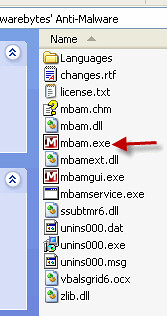
The Home security solutions software is a fake anti spyware that comes from the Rogue.VirusDoctor family.The home security solutions virus causes computers to show false and misleading information for the purpose of tricking computer users into buying the non working and fake home security solution program. This malware is spread via sites that offer online anti-malware scanner called Windows Web Security. When you visit these sites, you are shown a fake pages that appear to scan your computer for infections, viruses and malware. You are then bombarded by alerts telling you about detected infections and then urges you to download and buy a program that is supposed to clean your PC. Another method through which the home security solution virus gets through your PC is via hacked websites that installs the malware into your PC without your knowledge or consent by exploiting vulnerabilities in your computer.
Home Security Solutions Removal: How to Remove Home Security Solutions Virus
1. Download Malwarebytes and then rename mbam-setup.exe to iexplore.exe
2. Launch iexplorer.exe to install Malwarebytes
3. Once the program is installed, navigate to your Program Files\Malwarebytes' Anti-Malware folder.

Find mbam.exe and rename to iexplore.exe
4. Doubleclick iexplore.exe to launch Malwarebytes and use as av guard online removal tool
5. Click the "Update" tab and click the "Check For updates" button.
6. Once the program has loaded and updates were downloaded, select "Perform Quick Scan", then click Scan.

Find mbam.exe and rename to iexplore.exe
4. Doubleclick iexplore.exe to launch Malwarebytes and use as av guard online removal tool
5. Click the "Update" tab and click the "Check For updates" button.
6. Once the program has loaded and updates were downloaded, select "Perform Quick Scan", then click Scan.

7. Once the scan is complete, click OK, then Show Results to view the results.
8. Make sure that everything is checked, and click Remove Selected.





